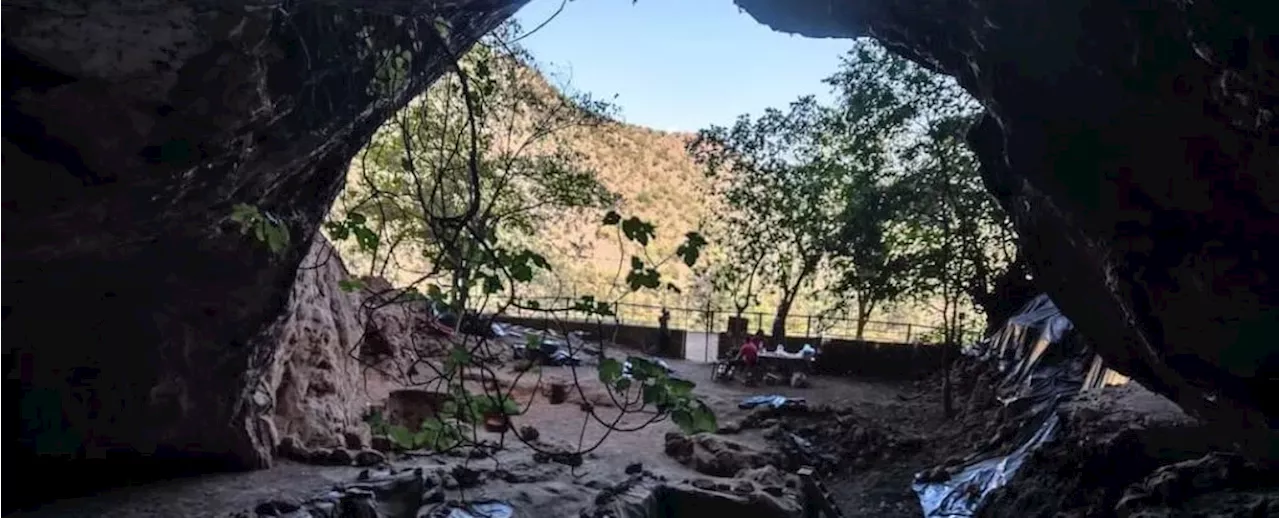Neanderthal children (who lived between 400,000 and 40,000 years ago) and modern human children living during the Upper Paleolithic era (between 50,000 and 12,000 years ago) may have faced similar levels of childhood stress but at different developmental stages, according to a study published in Scientific Reports.
Dental enamel study suggests differences in Neanderthal and Paleolithic human childhood stress retrieved 23 May 2024 from https://phys.org/news/2024-05-dental-enamel-differences-neanderthal-paleolithic.html
This document is subject to copyright. Apart from any fair dealing for the purpose of private study or research, no part may be reproduced without the written permission. The content is provided for information purposes only.Oct 3, 2018Use this form if you have come across a typo, inaccuracy or would like to send an edit request for the content on this page. For general inquiries, please use ourThank you for taking time to provide your feedback to the editors.
Your feedback is important to us. However, we do not guarantee individual replies due to the high volume of messages.to let the recipient know who sent the email. Neither your address nor the recipient's address will be used for any other purpose. The information you enter will appear in your e-mail message and is not retained by Phys.org in any form.Get weekly and/or daily updates delivered to your inbox.
Physics News Science News Technology News Physics Materials Nanotech Technology Science
United States Latest News, United States Headlines
Similar News:You can also read news stories similar to this one that we have collected from other news sources.
 Study finds paleolithic people settled in Cyprus thousands of years earlier than previously thoughtThe patterns of dispersal of early humans across continents and islands are hotly debated, but according to a new study in Proceedings of the National Academy of Sciences, Pleistocene hunter-gatherers settled in Cyprus thousands of years earlier than previously thought.
Study finds paleolithic people settled in Cyprus thousands of years earlier than previously thoughtThe patterns of dispersal of early humans across continents and islands are hotly debated, but according to a new study in Proceedings of the National Academy of Sciences, Pleistocene hunter-gatherers settled in Cyprus thousands of years earlier than previously thought.
Read more »
 Not All Paleolithic Hunter-Gatherers Were Big Into Meat, New Study RevealsThe Best in Science News and Amazing Breakthroughs
Not All Paleolithic Hunter-Gatherers Were Big Into Meat, New Study RevealsThe Best in Science News and Amazing Breakthroughs
Read more »
 Ancient Toolmakers and Elephant Trails: Scientists Solve Mystery of Paleolithic Quarry SitesScience, Space and Technology News 2024
Ancient Toolmakers and Elephant Trails: Scientists Solve Mystery of Paleolithic Quarry SitesScience, Space and Technology News 2024
Read more »
 130,000-year-old Neanderthal-carved bear bone is symbolic art, study arguesSoumya Sagar holds a degree in medicine and used to do research in neurosurgery at the University of California, San Francisco. His work has appeared in New Scientist, Science, Discover, and Mental Floss. He is a passionate science writer and a voracious consumer of knowledge, especially trivia.
130,000-year-old Neanderthal-carved bear bone is symbolic art, study arguesSoumya Sagar holds a degree in medicine and used to do research in neurosurgery at the University of California, San Francisco. His work has appeared in New Scientist, Science, Discover, and Mental Floss. He is a passionate science writer and a voracious consumer of knowledge, especially trivia.
Read more »
 50,000-year-old Neanderthal remains possibly infected by DNA viruses, study findsNeanderthal remains dating back 50,000 years, corresponding to the era of their existence, helped understand why they went extinct.
50,000-year-old Neanderthal remains possibly infected by DNA viruses, study findsNeanderthal remains dating back 50,000 years, corresponding to the era of their existence, helped understand why they went extinct.
Read more »
 Oldest Known Human Viruses Found in 50,000-Year-Old Neanderthal BonesThe Best in Science News and Amazing Breakthroughs
Oldest Known Human Viruses Found in 50,000-Year-Old Neanderthal BonesThe Best in Science News and Amazing Breakthroughs
Read more »
